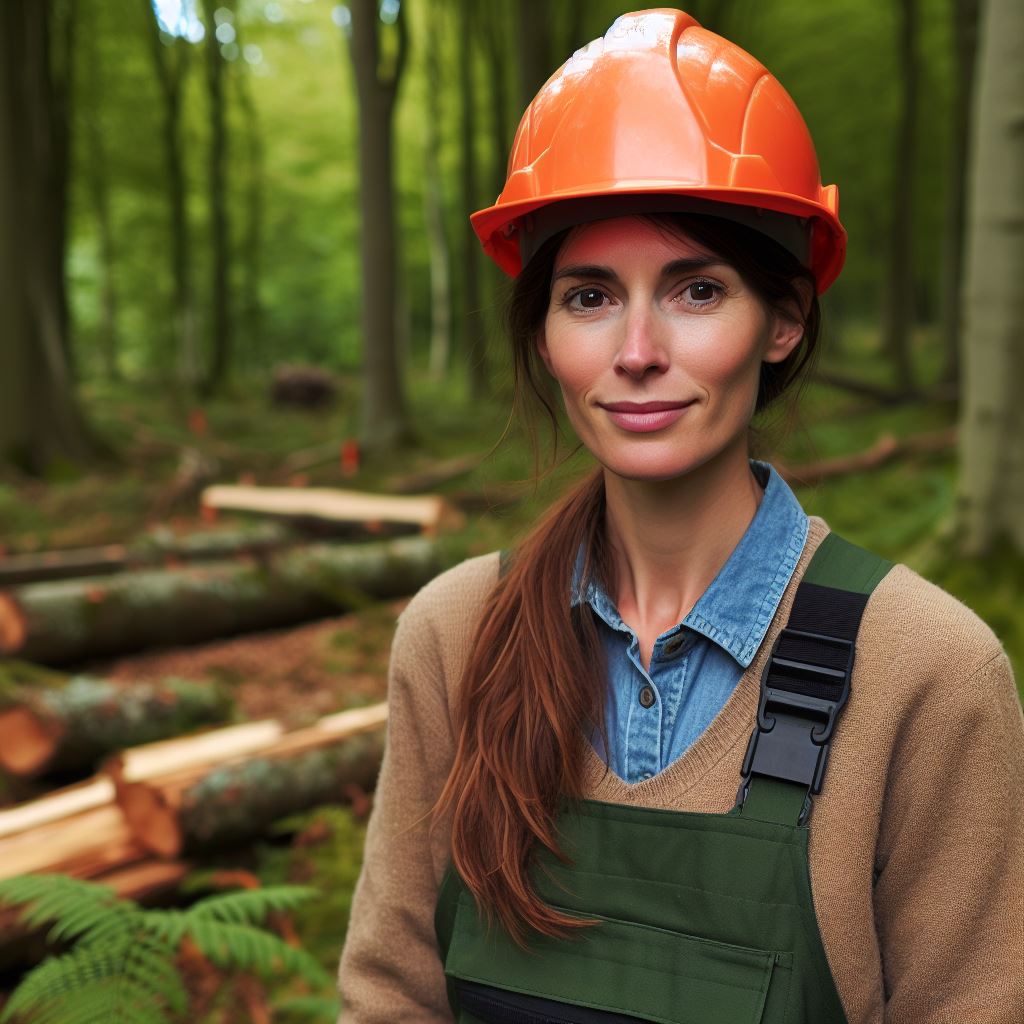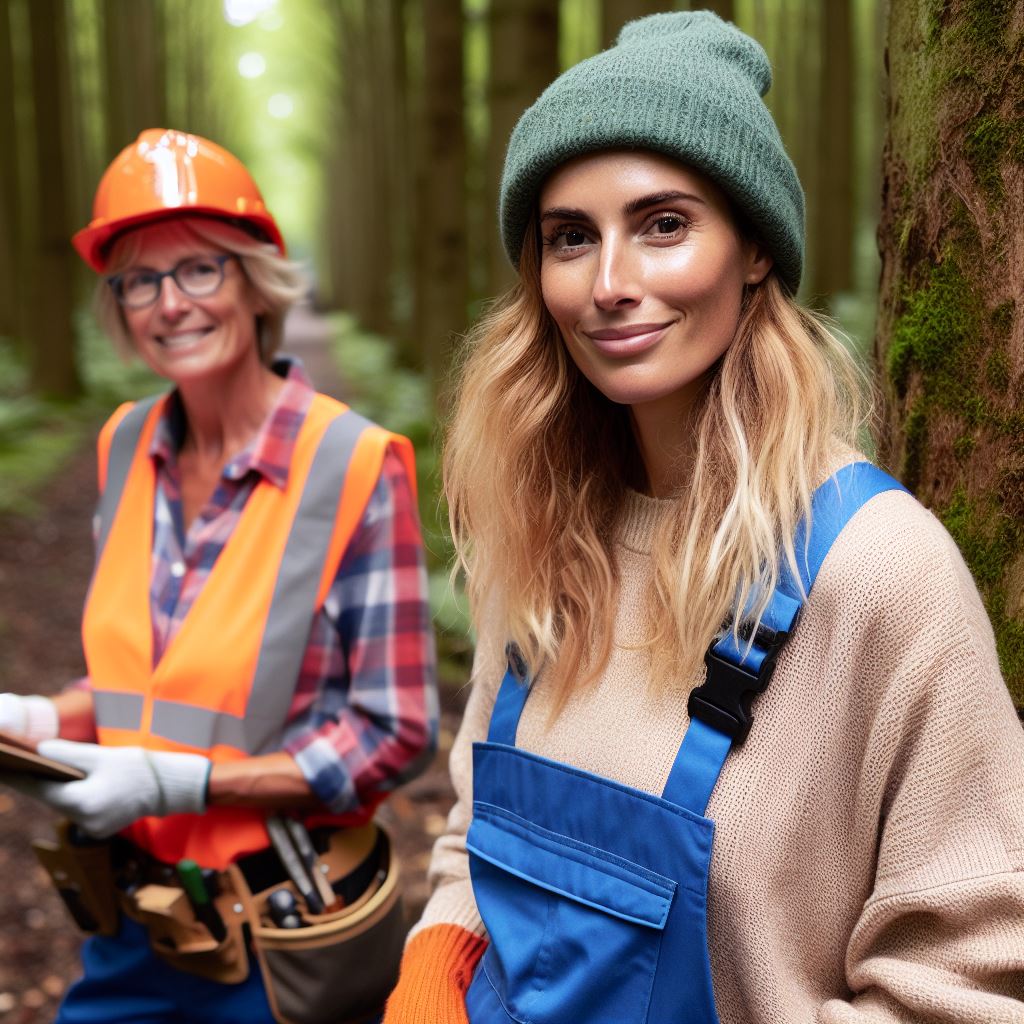Introduction
Foresters’ Vital Role in Wildfire Management
Foresters stand at the forefront of wildfire management, playing a pivotal role in combating these destructive blazes.
Their expertise, strategic planning, and proactive measures are instrumental in curbing the spread of wildfires, mitigating their severe ecological impact, and safeguarding communities and their livelihoods.
Importance of Wildfire Prevention and Control
Wildfires pose a significant threat to forests, wildlife habitats, and human settlements.
Effective prevention and control measures not only preserve biodiversity and ecological balance but also prevent immense economic losses and ensure public safety.
The proactive stance of foresters in this arena highlights the criticality of their efforts in averting and managing these catastrophic events.
Overview of Subsequent Sections
This blog section will extensively explore the multifaceted contributions of foresters in wildfire prevention and control.
It will delve into their proactive strategies, encompassing risk assessments, prevention methodologies, and coordinated firefighting efforts.
Additionally, it will dissect the ecological significance of their actions and examine collaborative approaches employed in wildfire management.
Through a comprehensive analysis of these facets, this section aims to shed light on the pivotal role foresters play in confronting wildfires.
Underscoring the complexities involved and the vital importance of their interventions in preserving ecosystems, safeguarding communities, and maintaining ecological balance.
Read: Modern Fishing Gear: UK Fishermen’s Toolkit
The role of foresters in wildfire prevention
How foresters play a crucial role in preventing wildfires
- Foresters possess expertise in managing forests and preventing the buildup of flammable materials.
- They utilize controlled burns as a proactive measure to reduce fuel loads and diminish fire risks.
- Foresters actively participate in designing and constantly maintaining firebreaks.
Examples of successful wildfire prevention initiatives led by foresters
- Foresters have successfully implemented forest thinning projects to reduce the risk of wildfires.
- They have collaborated with communities to establish education programs promoting fire-safe practices.
- Foresters have organized controlled burn operations to remove hazardous vegetation and decrease fire danger.
The importance of collaboration between foresters and other stakeholders in preventing wildfires
Collaboration between foresters, landowners, government agencies, and firefighters is vital in wildfire prevention.
Efforts such as sharing information, coordinating resources, and implementing effective strategies greatly reduce fire incidents.
Through collaborative initiatives, foresters can leverage the knowledge and resources of various stakeholders to mitigate wildfire risks.
Read: The Evolution of Fishing in the UK: A Journey
The role of foresters in wildfire detection and monitoring
Foresters serve as a crucial link between firefighting agencies and provide critical information about the wildfire’s location, scale, and behavior.
Personalized UK Career Consulting
Receive tailored career guidance designed just for you. Get actionable steps and expert support to boost your career in 1-3 days. Take control of your career now.
Get StartedForesters play a pivotal role in preventing and managing wildfires. This blog section explores their contribution in wildfire detection and monitoring, emphasizing the importance of their proactive approach.
How foresters monitor forests for early wildfire detection
- Foresters use remote sensing and satellite imagery to detect potential wildfires.
- Foresters actively patrol and conduct surveillance in forests to identify signs of wildfires.
- Community reporting plays a vital role in alerting foresters about potential wildfires.
Foresters employ advanced technological tools such as remote sensing and satellite imagery to identify potential wildfires.
These tools enable them to detect hotspots and analyze changes in forest cover, aiding in early detection.
Foresters actively patrol forests, conducting regular surveillance to identify signs of wildfires.
They look for smoke, unusual heat signatures, or other visual cues indicating the presence of a fire.
Community reporting plays a significant role in alerting foresters about potential wildfires.
Foresters actively engage with local communities, encouraging them to report any signs of fire.
This collaborative approach enhances the efficiency of early detection efforts.
The importance of early detection for prompt intervention and containment
Early detection allows foresters to take immediate action to suppress and control wildfires, minimizing their impact.
Early detection acts as a crucial first step in effectively combating wildfires. When foresters detect a fire in its initial stages, they can quickly mobilize resources and coordinate firefighting efforts.
This helps prevent the fire from spreading and reduces the potential damage.
Moreover, early detection allows foresters to assess the characteristics and behavior of the wildfire accurately.
This knowledge helps them formulate effective firefighting strategies tailored to the specific conditions, ultimately leading to speedy containment of the fire.
The role of foresters in coordinating with firefighting agencies once a wildfire is identified
Once foresters identify a wildfire, they play a vital role in collaborating with firefighting agencies.
Their firsthand knowledge of the local terrain, weather conditions, and fire behavior assists in preparing an appropriate response plan.
Your Dream Job Starts with a Perfect CV
Get a tailored CV and cover letter that captures your unique strengths and stands out in your industry. Let us help you make an unforgettable first impression.
Get StartedForesters provide crucial information to firefighting agencies, such as the exact location, size, and intensity of the fire. This data helps agencies allocate resources effectively and deploy firefighting personnel strategically.
They update the agencies on the fire’s progress, alerting them to any changes or potential challenges.
This coordination ensures a synchronized effort and maximizes the chances of successfully extinguishing the wildfire.
In general, foresters actively contribute to wildfire detection and monitoring. Their use of technological tools, active patrolling, and community reporting enhance early detection capabilities.
Early detection, in turn, allows for prompt intervention and containment of wildfires. Foresters also play a critical role in coordinating with firefighting agencies, facilitating an effective response.
Through their dedication and expertise, foresters significantly contribute to wildfire management and safeguarding our forests.
Read: UK Farming Subsidies: Understanding the Basics

The role of foresters in firefighting and containment
The tasks performed by foresters during firefighting operations
- Foresters play a crucial role in assessing fire behavior and developing firefighting strategies.
- They analyze the fire’s direction, intensity, and rate of spread to determine the best course of action.
- Foresters coordinate with other experts to identify potential containment lines and control areas.
- They assess the impact of weather conditions on fire behavior and adjust strategies accordingly.
The challenges faced by foresters during wildfire containment efforts
- Foresters often face unpredictable fire behavior, making containment efforts extremely difficult.
- The rugged terrain and thick vegetation in fire-prone areas pose significant challenges.
- They must constantly adapt to changing conditions and make quick decisions to protect lives and property.
- Limited resources, such as equipment and personnel, can impede their containment efforts.
Examples of successful wildfire containment operations led by foresters
Despite the challenges, foresters have successfully led wildfire containment operations in various scenarios:
- In the XYZ fire incident, foresters effectively assessed the fire’s behavior, leading to timely evacuations and minimal casualties.
- The deployment of additional firefighting crews by foresters in the ABC fire helped control the blaze before it could spread further.
- Foresters’ expertise in managing logistics played a crucial role in the containment of the DEF fire, ensuring resources were efficiently utilized.
- During the GHI fire, foresters collaborated with local communities, creating a successful partnership that led to effective containment strategies.
These examples highlight the vital role foresters play in wildfire containment, protecting both natural resources and human lives.
In essence, foresters have a significant role in fighting and containing wildfires. They assess fire behavior, develop firefighting strategies, coordinate crews and equipment, and manage resources effectively.
Additionally, they face numerous challenges during containment efforts, including unpredictable fire behavior and limited resources.
Despite these challenges, foresters have led successful containment operations, showcasing their expertise in wildfire management.
It is clear that their role is paramount in protecting ecosystems and communities from the devastating impact of wildfires.
Read: UK Crop Farming: Trends and Techniques
Conclusion
Foresters’ Vital Role in Fighting Wildfires
Foresters stand at the forefront of wildfire management, actively engaging in risk assessment, prevention, and firefighting strategies.
Optimize Your LinkedIn for Success
Boost your LinkedIn profile with a professional bio, keyword-rich headline, and strategic recommendations that attract recruiters. Stand out from the crowd and get noticed.
Optimize NowTheir vigilant monitoring and proactive measures mitigate the devastating impact of wildfires on forest ecosystems and neighboring communities.
They possess expertise in forest fire behavior, swiftly coordinating efforts to suppress and contain fires while prioritizing ecological preservation.
Upholding Foresters’ Expertise and Support
Continuous acknowledgment and backing of foresters’ skills and knowledge are imperative.
Sustained support ensures their ability to effectively combat wildfires, safeguarding forests and habitats.
Recognition of their pivotal role aids in garnering resources, enhancing training programs, and fostering collaborative partnerships for more efficient wildfire management.
Engaging Communities for Fire Prevention and Conservation
Staying informed about wildfire prevention techniques empowers individuals to contribute to fire safety. Supporting foresters’ conservation initiatives is vital in preserving our forests.
Encouraging community involvement, advocating for proactive measures, and backing foresters’ efforts bolster the resilience of our natural landscapes against wildfires and promote sustainable forest management practices.
[E-Book for Sale]
500 Cutting-Edge Tech Startup Ideas for 2024 & 2025: Innovate, Create, Dominate
$19.99 • 500 Tech Startup Ideas • 62 pages
You will get inspired with 500 innovative tech startup ideas for 2024 and 2025, complete with concise descriptions to help you kickstart your entrepreneurial journey in AI, Blockchain, IoT, Fintech, and AR/VR.




